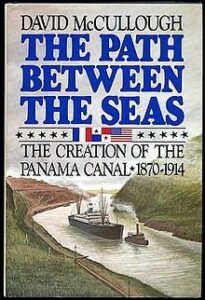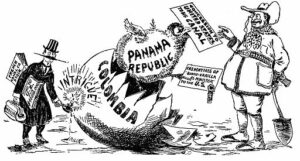
Best-selling author David McCullough won many awards, including The National Book Award for History, for his work The Path Between the Seas: The Creation of the Panama Canal 1870-1914. The book is a classic amongst classics, especially for Canal Zone history enthusiasts.
The Path Between the Seas came out in 1977 when the political tides were changing and the relationship between the two nations were dramatically strained. It was the same year that U.S. President Jimmy Carter signed two treaties with Panamanian President General Omar Torrijos to guarantee Panamanian sovereignty over the Canal Zone and, eventual, sole ownership over the Panama Canal. McCullough’s national best-seller was a full selection choice of the Book-of-the-Month Club (a long-time book subscription service).
This 615-page tome covers over 40 years of history and is a foundational account of the building of the Panama Canal. In McCullough’s true style, a lot of detailed information is provided concerning different areas of the Canal construction. He includes intricacies of engineering design, building construction, project management and personnel matters as well as many anecdotes of different workers, leaders, and administrators.
When the book came out, I was still living in the Canal Zone. I would sit on the banks of the Panama Canal and watch the ships go through the locks while reading about its complicated, but fascinating, history. I was proud (and still am very proud) that my dad and my friends’ parents worked for the Panama Canal Company. I loved learning about the foundational work of the French diplomat Ferdinand de Lesseps and enjoyed finding out that even as early as Christopher Columbus the world was interested in finding a site to build a passageway to connect the Atlantic and Pacific Oceans. The hard-work, dedication, and sacrifice of so many countries, nations, and people had paid off and still benefits the world today.
By no means is The Path Between the Seas a quick read. In fact, with all of the detailed minutiae McCullough provides, it is-in some places-technical, tedious, and dry, while, in other places, the narrative is engaging and interesting. However, The Path Between the Seas is most certainly a definite read for those interested in Panama Canal history and American history. I can’t think of a better book (except for my book Canal Zone Daughter) to take with you if you are visiting Panama on a business/personal trip or while taking a cruise through the Canal. The American Society of Civil Engineering designated the Panama Canal as of one of the “Seven Wonders of the Modern World” see InterestingFacts.pdf (ufl.edu) and The Path Beyond the Seas provides its fascinating historical background.
